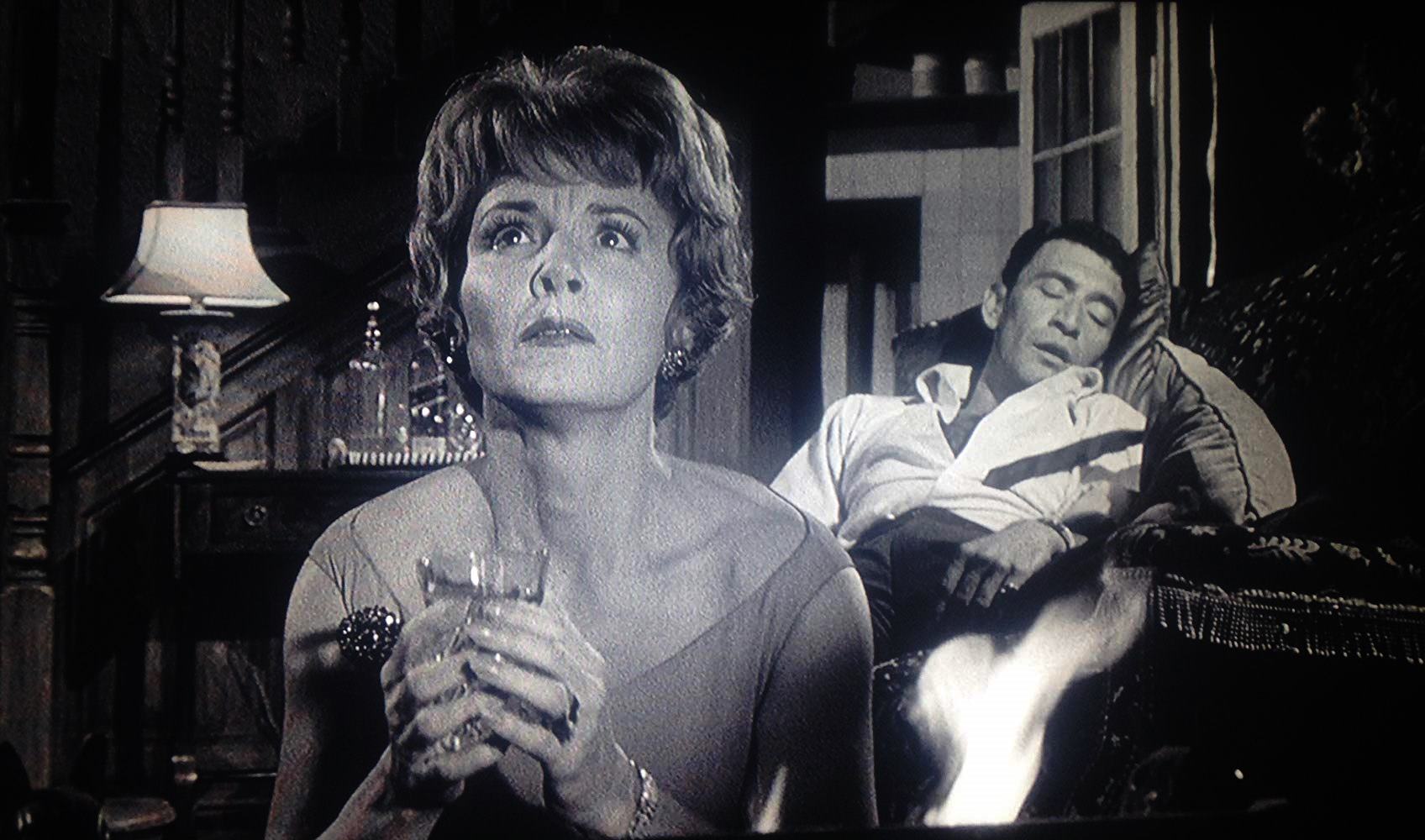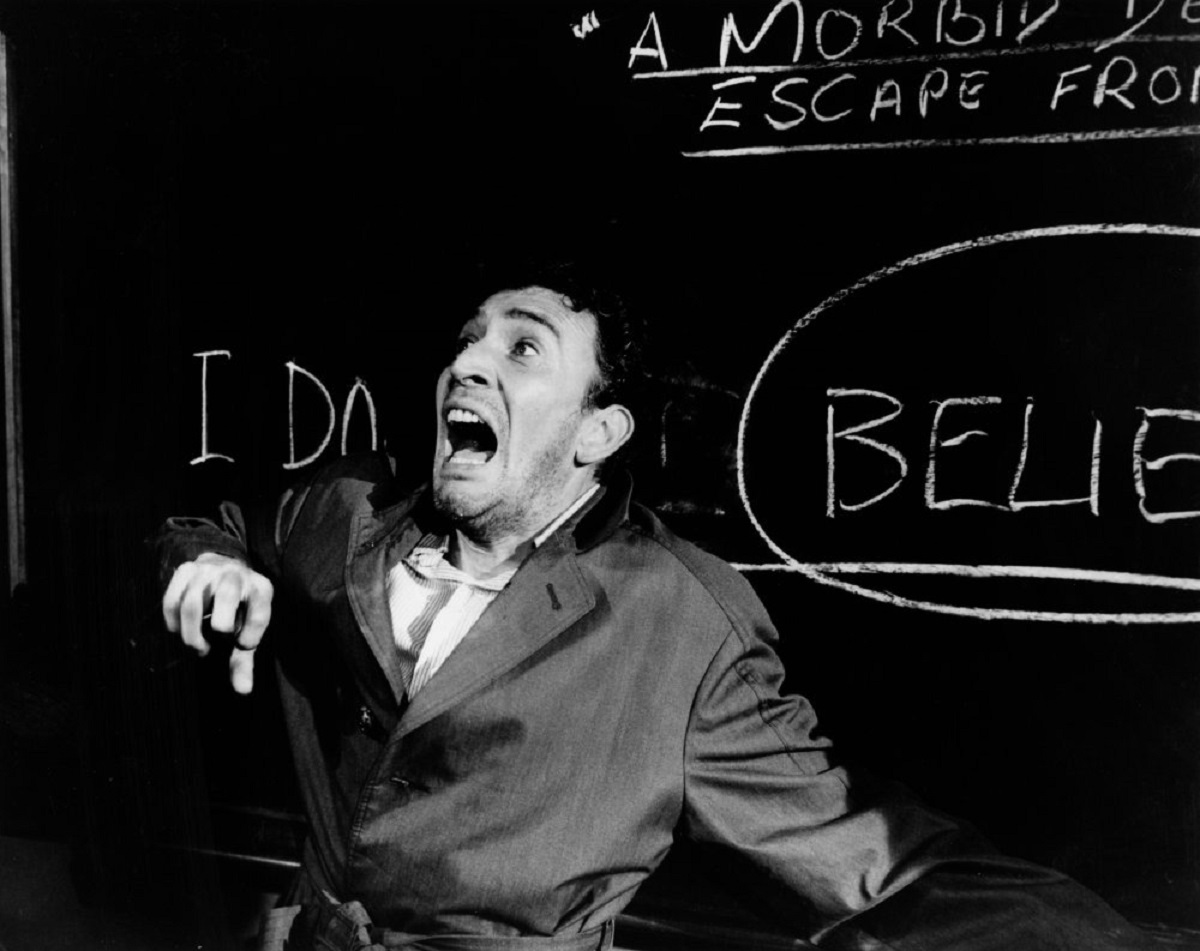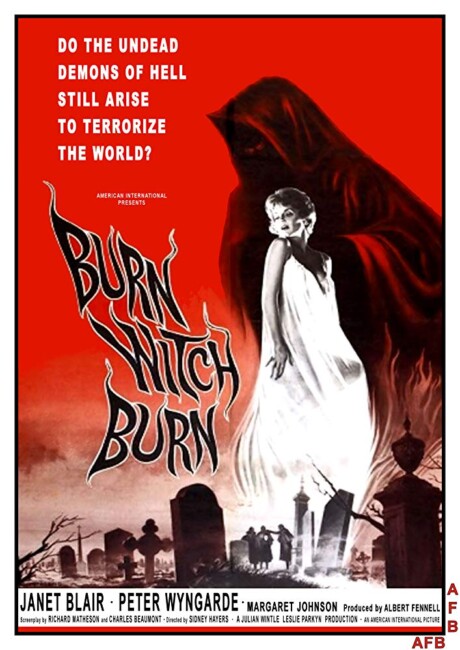aka Burn, Witch, Burn
UK. 1961.
Crew
Director – Sidney Hayers, Screenplay – Charles Beaumont & Richard Matheson, Based on the Novel Conjure Wife by Fritz Leiber, Producer – Albert Fennell, Photography (b&w) – Reginald Wyer, Music – William Alwyn, Art Direction – Jack Shampan. Production Company – Independent Artists.
Cast
Peter Wyngarde (Norman Taylor), Janet Blair (Tansy Taylor), Margaret Johnston (Flora Carr)
Plot
Norman Taylor, a psychology professor lecturing in belief and superstition, discovers that his wife Tansy is a practicing witch. Tansy is insistent that her charms have been responsible for Norman’s academic success. Angry at her superstitions, Norman forces Tansy to burn them. Almost immediately things start to go wrong for him as pupils accuse him of bullying and sexual harassment. He is drawn into Tansy’s web of superstitions, forced to believe in order to survive as a rival witch tries to use black magic to destroy him and his wife.
Night of the Eagle/Burn, Witch, Burn was the second of three films based upon the novel Conjure Wife (1943) by sf/fantasy author Fritz Leiber. Conjure Wife was previously filmed as a routine B-programmer Weird Woman (1944). This version comes adapted by two of the most renowned genre screenwriters of the era – Richard Matheson, who had written The Incredible Shrinking Man (1957), the thrice-filmed novel I Am Legend (1954), most of Roger Corman’s Edgar Allan Poe films and several episodes of The Twilight Zone (1959-63) and Star Trek (1966-9), and Charles Beaumont who wrote the rest of Corman’s Poe films, more episodes of The Twilight Zone and the screenplay for 7 Faces of Dr Lao (1964).
Charles Beaumont and Richard Matheson strip back the more extravagant scope of Fritz Leiber’s book – and surprisingly to the film’s advantage. In the book, all academic wives are engaged in witchcraft, whereas the film strips makes it just two of them; an incarnated stone dragon becomes the animated stone eagle of the title (a not very convincing special effect, the one area the film falls down); and they trim many of the subplots involving possession and people ending up in other bodies. The resulting film has been pared down to the essential core of Fritz Leiber’s droll comedy of academic rivalry and magic. Matheson, Beaumont and director Sidney Hayers then proceed to further strip things away to a level that was not in the Fritz Leiber story and tell Night of the Eagle as a psychological horror story not unakin to the work of producer Val Lewton in the 1940s. (Lewton produced works like Cat People (1942), I Walked with a Zombie (1943) and The Seventh Victim (1943) wherein the element of horror always inhabited a place of psychological ambiguity).

Director Sidney Hayers had first emerged on the Anglo-horror scene with the enjoyably Sadean Circus of Horrors (1960) and would go onto become a regular tv director on series like The Avengers, Magnum P.I., The Professionals and Baywatch, among many others. (See below for Sidney Hayers’ other genre work). Night of the Eagle is is Sidney Hayers’ finest moment – he never again made a work with such effectiveness as this. His sharp contrasts of fore– and background exude a tightly wound tension. There is lucid eeriness as the film plays out and the world of superstitions starts manifesting around Peter Wyngarde with scary but ambiguous effect. Hayers memorably restages the sequence from Vampyr (1932) with a person looking up out of a coffin as they are buried. The film culminates in the clever symbolic shot where Peter Wyngarde brushes against the blackboard where he had earlier boldly written his claim “I do not believe” and erases the ‘not’.
Peter Wyngarde, later the title character in the tv series Jason King (1971-2), gives a cool, rationalising performance, although the neurotically charged level that the wife Janet Blair starts on fails to go anywhere. Margaret Johnston creates a disturbed intense portrayal full of twitchy, bird-like mannerisms.
The Fritz Leiber novel was later filmed as the cheap Witches’ Brew (1979), which plays the story for comedy. The only other Fritz Leiber work to have been adapted to the screen is the vampire film The Girl with the Hungry Eyes (1993).

Sidney Hayers also directed the enjoyable Circus of Horrors (1960) about a psychopathic beauty-obsessed plastic surgeon hiding at a circus and two minor psycho-thrillers Assault (1970) and Revenge (1971). He is also credited as director on the third cinematically released Battlestar Galactica movie Conquest of the Earth (1981), although this was merely recut from episodes from the Galactica 1980 tv series.
Richard Matheson’s other genre works include The Incredible Shrinking Man (1957) based on his own novel, Roger Corman’s Edgar Allan Poe adaptations The House of Usher/The Fall of the House of Usher (1960), Pit and the Pendulum (1961), Tales of Terror (1962) and The Raven (1963), the Jules Verne adaptation Master of the World (1961), the Corman-produced mortician’s comedy The Comedy of Terrors (1963), The Last Man on Earth (1964) based on his novel I Am Legend (1954) concerning a world taken over by vampires, the Hammer psycho-thriller The Fanatic/Die, Die, My Darling (1965), the classic Hammer occult film The Devil Rides Out/The Devil’s Bride (1968), the historical biopic De Sade (1969), Steven Spielberg’s first film Duel (1971), The Night Stalker (1972) and The Night Strangler (1973) tv movies, the haunted house film The Legend of Hell House (1973) from his novel, the tv adaptation of Dracula (1974), the tv movies Scream of the Wolf (1974), The Stranger Within (1974), Trilogy of Terror (1975), Dead of Night (1977) and The Strange Possession of Mrs. Oliver (1977), the tv adaptation of Ray Bradbury’s The Martian Chronicles (1980), the time travel romance Somewhere in Time (1980) from his own novel, Jaws 3-D (1983), Twilight Zone – The Movie (1983), and numerous classic episodes of The Twilight Zone, Thriller and Star Trek. Works based on his novels and stories are The Omega Man (1971) from his I Am Legend, the afterlife fantasy What Dreams May Come (1998), the fine ghost story Stir of Echoes (1999), I Am Legend (2007), The Box (2009) and Real Steel (2011).
Charles Beaumont (1929-67) was a noted horror and science-fiction writer during the 1950s and 60s. He wrote a number of screenplays including Queen of Outer Space (1958), three films for Roger Corman with Premature Burial (1962), The Haunted Palace (1963) and The Masque of the Red Death (1964), The Wonderful World of the Brothers Grimm (1962), 7 Faces of Dr Lao (1964) and the posthumously produced Brain Dead (1990), as well as twenty-two scripts for tv’s The Twilight Zone (1959-63). Beaumont’s episode of The Twilight Zone entitled The Jungle (1961) had a very similar plot to this film with a businessman being haunted by an African witch doctor’s curse that he initially dismisses as superstition.
Trailer here


